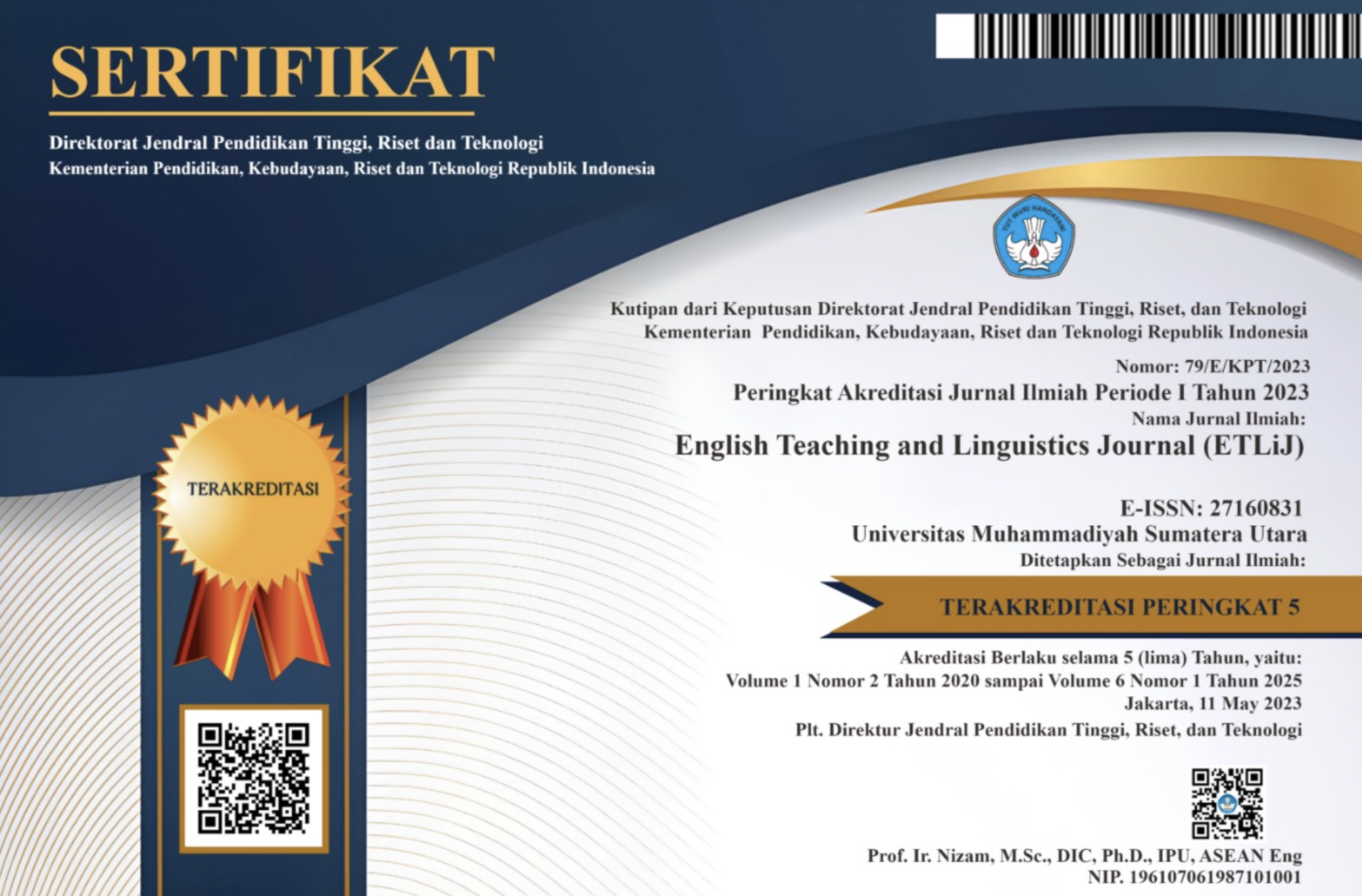Shifting of The 'Cultural Identity' Theme in The Film Adaptation 'Hujan Bulan Juni'
Abstract
This study aims to investigate the shifts that appear in two texts, films and novels. The two texts are the FilmHujan Bulan Juniwhich is a movie adaptation from the novel of the same title written by Sapardi Djoko Damono. This study begins by comparing the differences and similarities between the two texts. This analysis focuses on the narrative aspects of novels and films as part of literature. As part of the study of film literature that focuses on the issue of adaptation from one medium to another, this research examines the confluence and differences of two media forms - textual and visual. The selection of narrative elements used by the film director to be transferred and which other visual methods and formats are used will also be examined. The results of the study indicate that there is a significant difference between the source text (novel) and the transfer of the film. These differences are related to the narrative structure, the role and perspective of the narrator and ideological understanding related to the theme of cultural identity.
Keywords
Full Text:
PDFReferences
Ardiansyah, Chanafiah, dan Canrhas. (2020). Alih Wahana Novel Hujan Bulan Juni Karya Sapardi Djoko Damono ke Film HBJ karya Heni Nurcahyo dan Hestu Saputra: Kajian Ekranisasi, Jurnal Ilmiah Korpus, Vol. 4, no. 3, pp. 333-338.
Bordwell, David. (2008). Film Art. New York: McGraw-Hill.
Chatman, Seymour. (1990). Coming to Terms: The Rhetoric of Narrative in Fiction and Film. London: Cornell.
Costanzo, Linda. (2006). Literature Into Film: Theory And Practical Approaches. North Carolina: McFarland&Company, Inc., Publishers.
Damono, Sapardi Djoko. (2012). Alih Wahana. Jakarta: Editum.
Damono, Sapardi Djoko. (2015). Hujan Bulan Juni. Jakarta: Gramedia
Dudley, Andrew. (2001). The Major Film Theories: An Introduction. London; New York: Oxford University Press.
Fabe, Marilyn. (2004). Closely Watched Films: an Introduction to the Art of Narrative Film
Technique. California: University of California Press.
Fludernik, Monika. (2009). An Introduction to Narratology. London: Routledge.
Fulton, Helen. (2005). Narrative and Media. Cambridge: Cambridge University Press.
Genette, Grard. (1980). Narrative Discourse. Ithaca NY: Cornell University Press.
Hall, Stuart. (1993). Cultural Identity and Diaspora. Colonial Discourse and Post-colonial Theory: a Reader. Ed. Patrick Williams and Chrisman. London: Harvester Wheatsheaf.
Kristeva, J. (1980). Desire language: A semiotic to literature and art. (T. Gora, A. Jardine, dan L.S. Roudiez, penerjemah dan Leon S. Roudiez, editor). New York: Columbia University.
Lothe, Jakob. (2007). Narrative Beginnings: Modernist Literature and the Medium of Film. Oxford: Oxford UP.
M.H. Purnomo dan U. Kustoro. (Mei, 2018). Transformasi Hujan Bulan Juni karya Sapardi Djoko Damono, Nua: Jurnal Ilmu Bahasa dan Sastra , Vol. 13 no. 2, pp. 329-340.
Stam, Robert. (2004). Introduction:The Theory and Practice of Adaptation. Oxford: Blackwell.
Sugiyono. (2014) Metode Penelitian Kuantitatif Kualitatif dan R&D. Bandung : Alfabeta.
Vicaka, Inese: McCarthy and the Coens. 2014. The Novel versus the Film No Country for Old Men: The Moral Framework of the Novel and the Film. Hamburg, Anchor Academic Publishing.
DOI: https://doi.org/10.30596/etlij.v3i1.9327
Refbacks
- There are currently no refbacks.

This work is licensed under a Creative Commons Attribution 3.0 License
ISSN: 2716-0831





